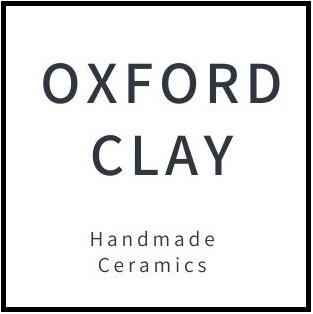What Makes Colour In Ceramics?
All colour in ceramics is essentially created from metal carbonates and metal oxides. These are mined from the earth or created synthetically using chemical processes. They are sold to Potters as powders which are added to clays and glazes. When Potters mix them in small quantities with clay or a base glaze and fire at high temperatures, colour is produced.
How is colour added to pottery?
Potters add colour to ceramics in two ways:
The first way is in the clay. Metal carbonates and oxides either found naturally in the clay or added later give clay its distinct colour. Red (terracotta) clay for example is naturally coloured with Red Iron Oxide. Metal oxides can be added to white clay to give bright colours that create colour without the addition of a glaze.
The other way colour can be created in ceramics is by adding metal oxides to glaze. During the firing process, the glaze melts with the oxides to create a coloured glassy material that fuses with the clay body of the pot.
Which metal oxides make which colours in pottery?
There are many different metal oxides and carbonates that are used in pottery. Metal oxides and carbonates are toxic and should be used with caution by Potters. Here are the main metal oxides and the colours they make:
Cobalt Carbonate and Cobalt Oxide - make the colour blue.
Copper Carbonate and Copper Oxide - make bluey greens and sometimes turquoise blues in pottery when they are fired in an oxidising atmosphere (such as an electric kiln) and reds if they are fired in a reduction atmosphere (such as some gas kilns). Copper Oxide can also create the colour black if it’s painted on thickly.
Chromium Oxide (toxic)- this makes a yellowy-toned green colour.
Iron Oxide - this makes reds, browns, oranges and black where it is highly concentrated.
Rutile - this is a mixture of Titanium Dioxide and Iron Oxide and can create a speckled effect in pottery glazes.
Manganese Dioxide (toxic) - this creates browns and purples. Manganese can occur naturally in some plant ash glazes, particularly in the leaves of plants.
Nickel Oxide (toxic) - this can make yellows, browns, pinks, blues, purples greens and greys in glazes, depending on what it is mixed with in a glaze.
Vanadium Pentoxide (highly toxic) - this is usually used in ceramic colouring stains to make greens and yellows.
Tin Oxide - this is used to make glazes more white and opaque.
Erbium Oxide - this is known as a ‘rare earth oxide’ and creates light pink in a pottery glaze.
Neodymium Oxide - another rare earth oxide which creates a pale lavender colour.
Praseodymium Oxide - a third rare earth oxide commonly used in pottery to create a pale green colour.
Cerium Oxide - the final commonly used rare earth oxide. Cerium is used to create yellow and orange glazes.
Problems with colours in ceramics
Many of these oxides are highly toxic and can cause harm to the people mining them. Cobalt which gives the blue colour in ceramics is one of the most harmful to the environment and the people working to mine it. Cobalt mining has been linked to human rights abuses, forced evictions from land and environmental pollution of the land, air and water.
An investigation into Copper Carbonate - a green colour in ceramics
The green colour in ceramics is made by adding copper carbonate or copper oxide to glaze or clay. Copper carbonate is a combination of copper sulphate and sodium carbonate.
There are two ways to obtain Sodium carbonate:
1.) Sodium carbonate is mined from the ground. The USA and Turkey are particularly big producers. Sodium carbonate is extracted from ‘trona’ soil beds. The process of extracting uses lots of energy and water. The wastewater from the process then has to be treated which uses more energy and creates greenhouse gas emissions
2.) Another method of obtaining sodium carbonate is to use the Solvay Process which can have some detrimental environmental impacts. The first is that the Solvay process produces calcium chloride as a by-product, some of which goes to landfill and is disposed of in waterways, which can destroy vegetation. The Solvay process also produces a lot of heat, which some factories try to mitigate. However, when the heat is released into the waterways it can harm or kill fish, frogs and crabs and their eggs. The Solvay process also produces ammonia and dust which if released into the atmosphere can cause respiratory problems for people living near factories.
Making pottery more eco-conscious
There are many things potters can do to reduce the impact of their pottery practice on the environment. From learning more about where their ingredients come from, to conserving water and energy. Potters can build these aspects into the actual design of their ceramics.
Making eco-conscious colour as a Potter
Potters can actually also make their own pottery colourants from recycled metal such as Iron and Copper! We use this process at Oxford Clay to create our green colour from recycled electrical waste. If you are interested in learning how to do this yourself check out the video course and workbook from the Oxford Clay shop.

